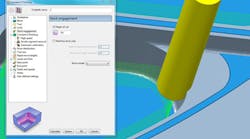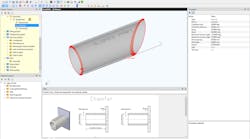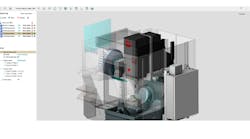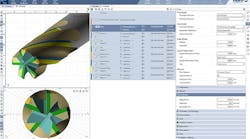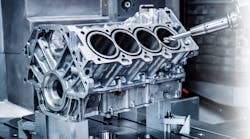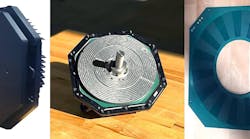Delcam plc has released the 2011 version of its PowerMILL CAM program for five-axis and high-speed machining. It emphasizes that this new issue makes it “easier than ever” to program safe toolpaths easier, thanks to new stock-model-engagement options that protect both the cutting tool and the machine from excessive loading.
Other enhancements in the new PowerMILL include new editing capabilities that simplify machining of duplicate items; more versatile control of feed-rates for leads and links; and extra functionality for sketching.
The new release also represents the completion of PowerMILL’s move to new, clearer forms for the complete range of strategies.
Delcam customers on maintenance can access the 2011 PowerMILL update online.
This CAM update’s options for optimizing tool loading will help overcome a constant conflict for programmers, Delcam explains: how can they maximize productivity by setting feed-rates as fast as their machines will allow, and still ensure safe speeds that will not break the tool. The need to maintain safe machining is growing more critical as machine shops and other manufacturers adopt “lights out” (unmanned) operation to improve productivity.
A number of CAM programs incorporate strategies based on the extent of cutter engagement to give more consistent loading on the tool, and so allow higher feed-rates. However, as Delcam explains, these options are usually limited to the initial roughing operations or to only roughing and rest-roughing. The new stock engagement technology offered with PowerMILL 2011 can be employed with all of the system’s finishing and rest-finishing strategies, thereby ensuring that the safest-possible toolpaths are used at all times.
The key to this more comprehensive solution is the accuracy of the stock models produced within PowerMILL after each machining stage has been completed. These models give a precise representation of the material still remaining on the part. They are used to ensure that the cutter removes no more than it can safely cut. At the same time, the stock models ensure that toolpaths are not produced where there is no material remaining so the machine tool is never left cutting air.
The new toolpath editing options in PowerMILL will make it easier for operators to produce multiple copies of an item, for example, when machining a series of cavities into a mold tool. It’s possible to specify an array of multiple copies in one operation, using approaches like number of rows and columns or a radial spacing around a central point. Once the copies have been produced, the complete series of toolpaths can be re-sequenced to minimize tool changes.
Enhancements to feed-rate optimization have been introduced to give better control of leads and links at the points of cutter engagement and exit. Typically, the feed rate as the cutter enters and exits the material needs to be slower than that set for the main length of the toolpath. Setting the entry speed too high may damage the cutter and the spindle, and may move smaller parts on their fixtures. Exit speeds are critical when machining brittle materials, e.g., graphite electrodes, because the cutter can chip the surface of the part if it is moving too quickly. PowerMILL 2011 users can avoid these problems by setting specific entry and exit feed-rates, either as percentages of the feed-rate for the main toolpath or as absolute values.
Sketching functions in PowerMILL 2011 have been enhanced with a number of new editing options, including the ability to offset or transform curves, and to flatten 3D curves into 2D curves, or to project 2D curves onto 3D surfaces.
